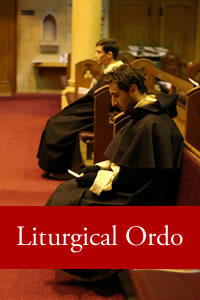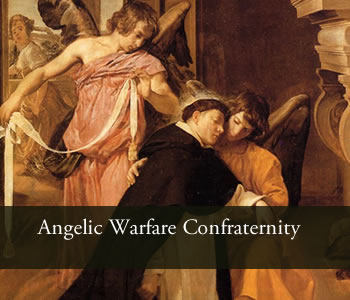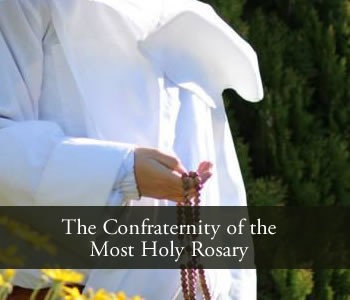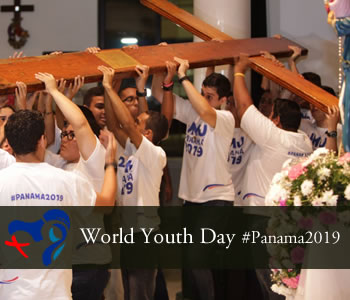The presence of the Dominican Order in Australia and the south-western Pacific Ocean is essentially a product of a very great expansion of the Catholic Church's global missionary outreach in the nineteenth century, sustained by thousands of priests, brothers and nuns who left their homes in countries such as France, Ireland, Belgium, the Netherlands and Italy for the "foreign missions". The chief home source for manpower for the Australasian Dominican mission was Ireland where the Church was undergoing revitalisation and growth with the passing of the penal era.
Nevertheless, the first recorded visit of a Dominican friar to the territory of the present Province of the Order, which embraces Australia, New Zealand, the Solomon Islands and Papua New Guinea, was a Frenchman. Father Paul-Antoine Leonard de Villefeix was chaplain to a French commercial expedition that visited the Solomon Islands in 1769. A landing was made at what the French named Point Praslin near the northern tip of Santa Isabel Island. The expedition sailed south to New Zealand and de Villefeix was at Doubtless Bay on the Northland Peninsula for Christmas.†
It is possible that Dominican friars had accompanied Spanish voyages of exploration in the Pacific Ocean, some of which passed through the Solomon Islands in the seventeenth century. Even earlier, the Portuguese Dominicans were in the East Indies in the sixteenth century and it cannot be ruled out that one or more of them might have reached the northern coast of Australia. However, speculation about the very early entry of Spanish and Portuguese Dominicans is just that, speculation.
The first Dominican known for sure to have stepped on to Australian soil was the Dublin-born Vincent Christopher Dowling who arrived in Sydney in 1831 as a government-sponsored chaplain to the Catholic community. (There is a vague suggestion that a Dominican priest was transported to New South Wales in 1798 for political offences, but this is so far not established.) Around ten Dominicans, mainly Irish but also a few Englishmen, laboured as missionaries in the colonies of New South Wales, Victoria, South Australia and Queensland in the mid- and later nineteenth century. All operated as individuals, more or less as secular priests. Some of them came out for health reasons. Moves to establish a Dominican community in Melbourne in the 1860s came to nothing.
The first community of friars was established in Adelaide in 1898. The initiator of this move was Archpriest Bernard Nevin who had been a Dominican novice in Ireland and had had to leave because of poor health but he retained an affection for the Dominican tradition. He suggested to the then Archbishop of Adelaide, John O'Reily, that the Irish Dominicans be asked to make a foundation. After negotiations with the Irish Provincial, Joseph Hickey, the invitation was accepted and three Irish Dominican friars arrived on board the Oriental at Largs Bay on the 18 September 1898. They were assigned to the parish of North Adelaide which included suburbs to the north, Prospect and Kilburn. They immediately commenced planning for a suitable residence and the foundation stone of St Laurence's Priory, named after the saint to whom the North Adelaide parish church is dedicated, was laid by Archbishop O'Reily less than a year after the arrival of the friars.
The leader of the first group of Dominicans, Robert Spence, born in Cork, became Archbishop of Adelaide on the death of O'Reily and was in office from 1915 to 1934. He was the only Dominican to be a bishop in Australia until Anthony Fisher was consecrated as an auxiliary bishop for the Archdiocese of Sydney in 2003. Bishop Fisher went on to become Bishop of Parramatta in 2010 and Archbishop of Sydney four years later.
The Irish Dominican men came to Adelaide as parish priests and parish work provided the pattern of ministry as the Order became active in other parts of Australia. Foundations attached to parishes were opened in Helensburgh on the south coast of New South Wales in 1923, East Camberwell, a suburb of Melbourne, in 1924, Wahroonga, a suburb of Sydney, in 1948, Brisbane in 1951, Perth in 1954, Canberra in 1958 and Newcastle in 1972. The short-lived Newcastle foundation was opened in partnership with the Spanish Holy Rosary Province.
The on-going presence of the friars' branch of the Order in New Zealand was pioneered by two Englishmen who ministered in Auckland in the early years of the twentieth century, Benedict Tickell and Gilbert Tigar. Common life commenced in 1949 with a foundation in Remuera, a suburb of Auckland, from where the friars were chaplains to the Catholic Teachers' College and to a large school conducted by the Sacre Coeur Sisters. The Dominican community transferred to the parish of Blockhouse Bay in 1960, which was exchanged for St Benedict's parish, Newton, fifteen years later. In 1949 the Order also accepted the care of North East Valley parish in Dunedin. In the 1990s there was a short-lived parish-based presence in Wellington.
Hitherto a dependency of the Irish Dominicans, Australia and New Zealand were erected as a Province in its own right in 1950 and dedicated to Our Lady Assumed into Heaven, Pope Pius XII having proclaimed the dogma in the same year. Up to the time of writing (2016), there have been eight Priors Provincial, the first two Irishmen, the others Australians, Mannes Cussen (1950-1956), Jerome O'Rorke (1956-1972), Peter Galvin (1972-1980), Nicholas Punch (1980-1989), David Halstead (1989-1993), Mark O'Brien (1993-2000), Thomas Cassidy (2000-2008) and Kevin Saunders (elected 2008).
In 1940, even before receiving the status of a Province, the Order in Australia opened its own novitiate and house of studies at East Camberwell. Candidates had previously been trained in Ireland. The house of studies was divided into philosophy and theology sections in 1948, the former remaining in Melbourne, the latter transferring to Sydney (Wahroonga). The two sections of the studentate were brought together again in 1967 with the opening, by the then Master General of the Order, Aniceto Fernandez, of a new house of studies at Blackfriars Priory, Canberra. This was a noble building designed by the Irish Dominican architect, Bonaventure Leahy, whose other designs in Australia include the striking church of the Holy Rosary in Perth. A shift in the preferred model of seminary education together with declining numbers of students and lecturers caused the house of studies to move back to Melbourne in 1974 and establish links with the Yarra Theological Union at Box Hill, a consortium of the lecturing staff of various clerical religious orders within the Melbourne College of Divinity (later the University of Divinity). Blackfriars Priory became the novitiate and a retreat and conference centre. More recently the Dominican Centre of Studies has transferred its affiliation from the Yarra Theological Union to another teaching institution within the University of Divinity, the Catholic Theological College, located in the Melbourne city centre.
Dominicans in Australia and New Zealand have been deeply involved in the educational apostolate. Blackfriars Priory School for boys opened in 1953. The Province then established a succession of residential halls for university students, Aquinas Hall at the University of Otago, Dunedin, in 1954, John XXIII College at the Australian National University, Canberra, in 1967, Mannix College at Monash University, Melbourne, in 1969 and St Albert's College at the University of New England, Armidale, in the same year. In Australia the construction of colleges was made possible by the influx of commonwealth government funds for university capital works. Dominicans also held the Catholic chaplaincies to all of the above universities, plus the Universities of Auckland and Newcastle. The Order has also contributed to the inauguration of Australia's two Catholic universities, the Australian Catholic University and Notre Dame University.
Dominicans have been lecturers in various academic disciplines at a range of seminaries, theological colleges and universities, in Melbourne, Sydney, Canberra, Auckland, Dunedin, Bomana and Honiara. Individual friars have done similar work outside the Province, in Rome, Oxford, Manila and Karachi. Australian Dominican academics have published scholarly books and articles in such areas as philosophy, scripture, patristics, theology, history, bioethics, education and social questions. The Province itself has sponsored a number of its own publications, including the 'Holy Name Monthly', 'Dominican News from the Solomon Islands', 'Bulletin of Christian Affairs', 'Journal of Justice and Peace' and 'The Star: Rosary Newsletter'.
At the invitation of the Holy See the friars entered into partnership with the Dominican sisters and lay associates in 1956 to open a mission in the Solomon Islands. The first mission party, which included two friars, Peter McDonald and Dominic Mahony, was formally farewelled at a liturgical ceremony held in Sydney on 20 January of that year, at Santa Sabina Dominican convent, Strathfield, presided over by the Apostolic Delegate for Australia, Archbishop Romolo Carboni. The first mission station was established at Nila on Poporang, one of the Shortland Islands, which expanded into a network of similar stations throughout the Western Province of the Solomon Islands. The emphasis was on evangelisation, catechesis, education and health care. To facilitate communication between these widely-separated places a second-hand naval boat was acquired and outfitted in 1957. Renamed the Salve Regina, it was blessed by Cardinal Norman Gilroy, Archbishop of Sydney, and launched by Countess Nina Poninska, wife of a Polish diplomat. The vessel was then sailed from Sydney to Nila, a voyage taking two weeks. The vessel saw service until 1970 when it was wrecked on a reef in Choiseul Bay.
In 1960 the territory of the mission was placed under direct episcopal supervision by the creation of the Vicariate Apostolic of the Western Solomons. An Irish Australian Dominican priest, Eusebius Crawford, was named first bishop and was consecrated by Pope John XXIII. Six years later the Vicariate Apostolic was raised to the status of a diocese, that of Gizo. The second Dominican Bishop of Gizo was Bernard O'Grady who succeeded Bishop Crawford in 1995. A third Dominican bishop appeared when Christopher Cardone of the Order's New York Province, was appointed as auxiliary bishop in Gizo in 2001. Three years later he was name Bishop of Auki on the island of Malaita. In 2016 Bishop Cardone was named as Archbishop of Honiara.
In 1980 the Order established a presence in Papua New Guinea when local students for the priesthood were sent for their studies to the Catholic Theological Institute in Bomana, just outside Port Moresby. Four years later a residential Dominican college, dedicated to St Martin de Porres, was opened. In 1989 a foundation was established at Tetere on the island of Guadalcanal in the Solomons. This was later moved to the capital of the Solomons, Honiara, where a house of studies for Solomonese students was established in the suburb of Henderson in association with the Holy Name of Mary Seminary. In 1985 the Solomon Islands and Papua New Guinea were constituted as a vicariate of the Assumption Province.
Over the years, both in the Province and its Vicariate, the friars have collaborated closely with the Dominican sisters and have also supported a variety of lay groups who have had a long identification with the Order's spiritual traditions, including the Holy Name Society, the Rosary Confraternity and the Dominican laity.
In addition to the works already mentioned, Dominican involvements are, or have been, along a broad spectrum of activity: retreats and conferences; spiritual direction; itinerant team preaching; chaplaincies to convents, schools, hospitals, police and prisons; support for youth in crisis, problems of homelessness and addiction, and social justice outreach in the inner city and outer West regions of Sydney; journalism and talk-back radio; military, naval and air force chaplaincies including active service in the first and second world wars and the Vietnam war; diocesan and educational administration; clinical psychology and counselling; scholarly engagement with indigenous cultures in Australia (Aborigine) and New Zealand (Maori); pastoral assistance to Eastern-rite Catholic churches; dialogue with Islam; and a wide range of migrant chaplaincies to communities of Hungarians, Poles, Croatians, Ukrainians, Russians, Spaniards, Vietnamese, Tamils, Cook Islanders and Indonesians.
The Australasian Dominican Order began as an Irish mission. Some 70 Irish friars served in this Province in the nineteenth and twentieth centuries. The Irish have been predominant, whether from Ireland or from Irish Australian and New Zealand families, but the friars who have worked, or are still working, in this part of the world have been drawn from a remarkable diversity of other nationalities: French, English, Italian, Spanish, Maltese, Dutch, Hungarian, Polish, Slovak, Lebanese, Indian, Vietnamese, Chinese Malaysian, Solomonese, Papua New Guinean, Gilbertese, American.
The 1950s and 1960s were a period of rapid expansion of the Order's activity in the territory of the Province, typical in many ways of the pre-conciliar era of energetically building up resources and structures and the conciliar years of vibrant enthusiasm for new ways. By way of contrast, the post-conciliar years have been a testing time for the Dominicans, as for other orders and ecclesiastical entities here and overseas. Comfortable certainties and ancient customs have disappeared; agreement about identity, purpose and strategy is harder to achieve; in the Church as in society at large, change is now the order of the day after a long period of stability. Confronted with a marked decline in recruiting and the consequent ageing of its personnel, the Order in Australia and New Zealand has found it impossible to sustain all of the initiatives and projects taken on in the confident period of growth and now finds itself in a painful process of retrenchment. All of the university colleges have been surrendered with the exception of John XXIII College, as have some of the university chaplaincies. The Dominican presence in Dunedin has come to an end. The friars left the parish of Wahroonga in 1997 although, after several tentative starts, they have regrouped as a community in Glebe from where they are working in the parishes of Forest Lodge-Pyrmont and Broadway, the chaplaincies to the University of Sydney, Notre Dame University and the University of Technology Sydney and lecturing at the Catholic Institute of Sydney. Reluctantly, in 2004 the Province had to relinquish Blackfriars Priory in Canberra. On the other hand, there has been a very considerable flourishing of vocations in the Solomon Islands and Papua New Guinea. The Melanesian brothers are now approaching half the numerical strength of the Province.
Today, Dominicans struggle to staff their far-flung existing commitments. Even in the Solomon Islands and Papua New Guinea, where recruiting patterns are brighter, there is a chronic shortage of manpower and resources. Nevertheless, animated by the priorities set for community and mission in the contemporary world by a series of general chapters of the Order and in the context of a new emphasis on co-operation among Dominican entities in the Asia-Pacific region, the Dominicans of the Assumption Province, currently numbering around 100 men, go forward to meet the challenges and changes of the future.
Christopher Dowd OP
Provincial Historian
Note
† Dunmore, John. "Le Père de Villefeix et al: Première Messe en Nouvelle Zélande." Société des Océanistes Journal XXV (1969) 305-6.
Otto Vervaart's catalogue of resources on Dominican history






